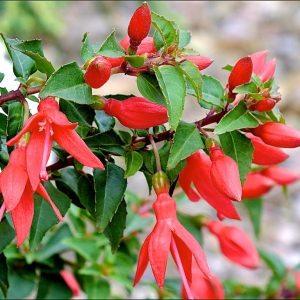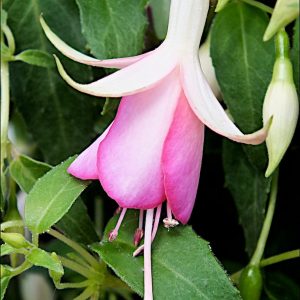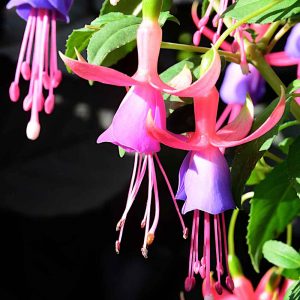Fuchsias are known for their stunning, pendulous flowers that add a touch of elegance to gardens and hanging baskets. Follow this comprehensive planting guide to ensure the successful establishment and blooming of your fuchsia plants:
Site Selection
Light Requirements: Plant fuchsias in a location that receives dappled sunlight or partial shade. Too much direct sunlight can scorch the delicate foliage.
Soil Conditions: Fuchsias prefer well-draining, fertile soil. Incorporate organic matter such as compost or well-rotted manure to enhance soil structure.
Planting Time
Timing: Plant fuchsias in the spring after the last frost date in your area. This allows the plants to establish before the growing season.
Planting Process
Container or Ground Planting: Fuchsias are well-suited for both ground planting and containers. Ensure that containers have drainage holes.
Planting Depth: Plant fuchsias at the same depth as they were in the nursery container. Space them about 12 to 24 inches apart, depending on the variety.
Watering
Consistent Moisture: Fuchsias prefer consistently moist soil. Water the plants regularly, especially during dry periods, but avoid waterlogging.
Mulching
Mulch Application: Apply a layer of organic mulch around the base of the plants to retain moisture and suppress weeds. Keep the mulch away from the stems to prevent rot.
Fertilisation
Balanced Fertiliser: Use a balanced, water-soluble fertiliser formulated for flowering plants. Apply the fertiliser every 2-4 weeks during the growing season.
Support
Staking: Tall or trailing varieties may benefit from staking or other supports to keep them upright.
Pruning
Deadheading: Regularly remove spent flowers to encourage continuous blooming. Pinch back the tips to promote bushiness.
Pest and Disease Management
Aphid Control: Monitor for aphids, a common pest for fuchsias. Use insecticidal soap or a strong stream of water to control infestations.
Fuchsia Gall Mite: Watch for symptoms of fuchsia gall mite and treat promptly if detected.
Winter Care
Overwintering: In colder climates, bring container-grown fuchsias indoors before the first frost. In-ground plants may benefit from a layer of mulch for winter protection.
Monitoring and Adjustment
Visual Inspection: Regularly inspect your fuchsias for signs of stress, pests, or diseases. Adjust watering and care practices based on your observations.
Enjoy the Blooms
Blooming Season: Fuchsias typically bloom from late spring to Autumn. Enjoy the vibrant and unique flowers they produce.
By following this planting guide, you’ll create an ideal environment for your fuchsia plants to thrive. Customise care based on your local conditions and the specific requirements of the fuchsia variety you have chosen. Your efforts will be rewarded with an abundance of colourful blooms and lush foliage.










